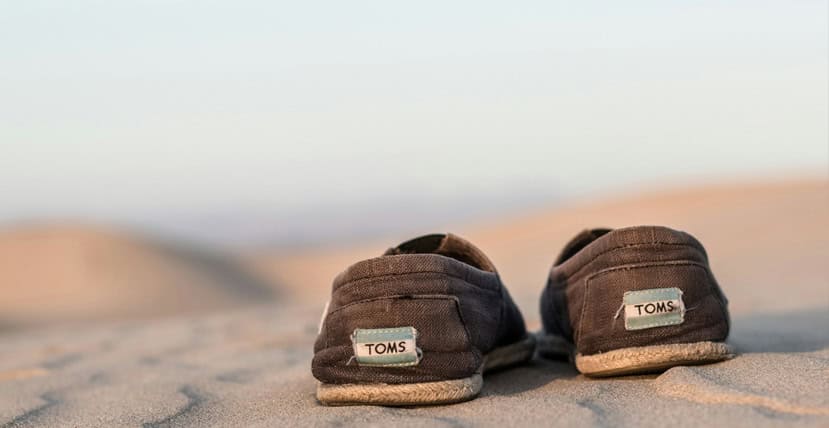Companies may have hundreds of trademarks, but the primary or house mark is the most important and should be the centerpiece of every trademark strategy. Trademark owners take different approaches to brand awareness and protection, though sometimes your efforts on one side of the coin bleed over to the other.
Disney: Selling happiness
Take Disney as an example. Disney is celebrating its 100th anniversary this year. To promote this achievement, Disney bought a 90-second spot during the Super Bowl in February.
The most fascinating aspect of Disney’s commercial during the Super Bowl is that it didn’t promote a new movie, a theme park, a cruise, or any specific product inside the Magic Kingdom. It wasn’t an advertisement for a “thing”—it was an advertisement for a brand. And it celebrated both the Disney brand as well as its customers, thanking them for creating their happy memories with Disney. And what is a trademark, after all, other than an identifier of the source of goods and services sold to consumers? For Disney, their brand is their most valuable asset.
The ad, called “Disney 100 Special Look,” takes the audience on an emotional journey juxtaposing moments from Disney films with real life experiences—starting with Mirabel opening her eyes to the next shot of a young girl with similar dark curly hair and glasses seeing Mirabel on the screen and turning around with an expression of self-recognition. The voiceover intones “think of the one place you’ve always wanted to see” before cutting to a shot of Cinderella’s castle lit up with fireworks. A child’s voice asks, “is this where magic comes from?” The ad includes everything from vintage Disney with Mickey’s debut in “Steamboat Willie” all the way up to its modern properties—Pixar, Marvel Studios, and Lucasfilm. Walt Disney’s voice is heard thanking “all the artists, all the workers and all of you” before closing with the familiar strains of “When You Wish Upon a Star.”
The ad ties childhood memories with the Disney brand—from films to visits to the park to interaction with characters. It reminds its audience that the Disney brand equals joy, and it’s very effective in making that connection. It was the top-performing ad of Super Bowl night, according to System1, an advertising effectiveness service that measures viewers’ responses to predict ads’ potential long-term impact on brand growth on a 1 to 5.9 star rating. Disney’s ad received 5.3 stars.
“Disney100 represents a celebration of all of our fans and families, and our storytellers and creative visionaries whose talents and imaginations have created the magical moments that make Disney such an enduring part of the global culture,” Disney CEO Bob Iger said in a statement.
Disney’s approach is to celebrate the brand, strengthening its position in the minds of Disney’s customers and, by extension, enforcing the strength of its house marks. And this strategy benefits Disney in the future, should it have to enforce its marks in the future. Disney’s brand is its identity, and, in the words of The Incredibles, “[y]our identity is your most valuable possession. Protect it.”
Jack Daniel’s: A dogfight for TM rights?
On the other side of the coin is Jack Daniel’s, the iconic Tennessee whiskey brand, which went all the way to the Supreme Court to protect its brand against a dog toy maker that parodied the Old No. 7 bottle and label.
Oral argument took place this past month. The case revolves around whether products that parody the trademarks of others should enjoy special First Amendment protection and how that conflicts with the protections afforded under U.S. trademark law.
VIP Products’ toys mimic the shape of Jack Daniel’s well-known bottle design as well as phrases found on the label, including “Bad Spaniels Silly Squeaker” along with “The Old No. 2 on Your Tennessee Carpet” and “43% Poo by Vol.”
Jack Daniel’s sued VIP, arguing the toys violate federal trademark rights and harm the company’s brand. After the U.S. Court of Appeals for the Ninth Circuit found in favor of VIP in 2020, saying the toys are protected under the First Amendment, Jack Daniel’s sought relief from the high court.
At the oral argument for the case, the justices seemed split but both sides conceded that the current state of the law needs revising. For its part, VIP advocated for a new analysis to be created based on the perception of parody, competitiveness between the parties’ goods, and material differences between the marks.
Of course, this case was not without its pop culture references and hyperbole, with arguments referencing obvious parodies like “Mutant of Omaha Nuclear Holocaust Insurance” and “Chewy Vuiton.” For its part, Jack Daniel’s struck a different chord, arguing the rights of trademark owners would be at severe risk for brand tarnishment and dilution if they could not dispute the use of their marks, even with obvious parody, particularly where that parody may be particularly offensive.
Other major brands like Campbell Soup, Levi Strauss & Co., and Patagonia, Inc. joined Jack Daniel’s in arguing for the mark owner. These companies argue that an overly broad exception of parody and expressive works harms the value and distinctive quality of their brands. But not everyone weighs the rights of trademark owners as highly.
“It is ironic that America’s leading distiller of whiskey both lacks a sense of humor and does not recognize when it—and everyone else—has had enough,” attorneys for VIP wrote in an opposition filing. “VIP has never sold whiskey or other comestibles, nor has it used ‘Jack Daniel’s’ in any way (humorously or not). It merely mimicked enough of the iconic bottle that people would get the joke.”
Beyond this case, there are serious questions that your business may need to consider. Is parody a legitimate concern for diluting your trademarks? And is the court battle good for PR (any name recognition is good publicity) or bad for the brand (big company tries to squash a little one)? How can my brand protect itself from would-be infringers using humor to skirt trademark laws?
While it’s always difficult to predict Supreme Court decisions in hotly contested cases like this, one thing is certain: the Court has its work cut out for it in determining which dog will have its day.


